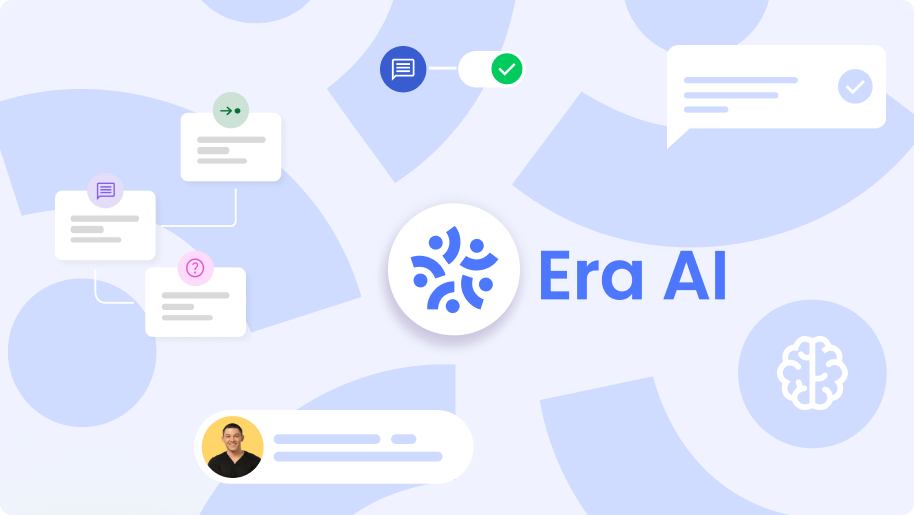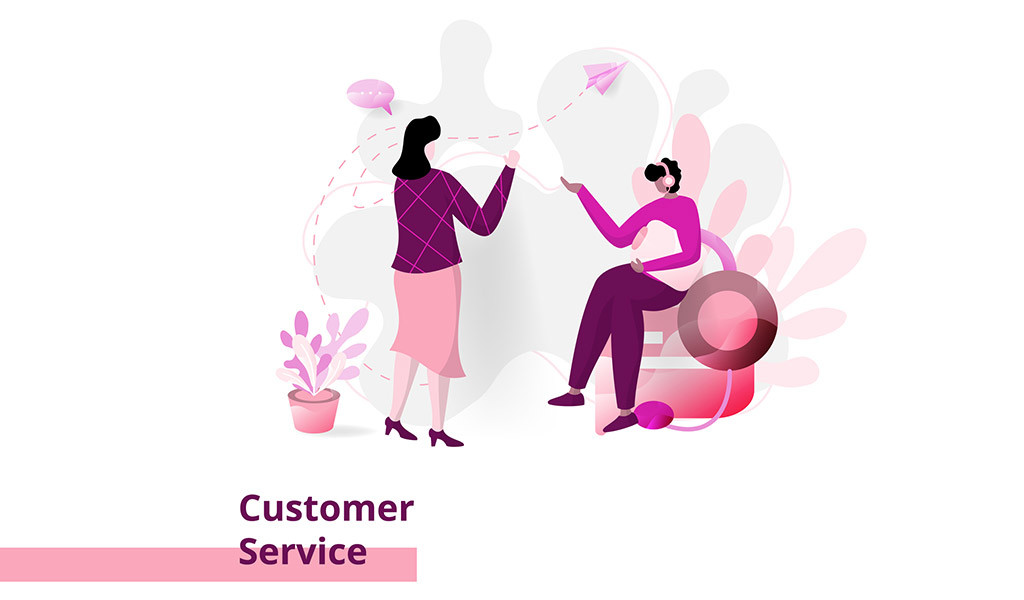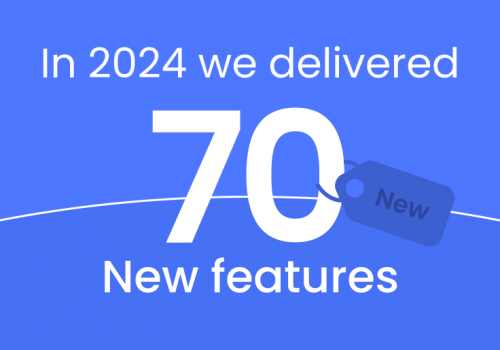Your customer service department is a great opportunity to connect with customers, help them solve problems, and show how much you care. When you get this right, it can bring rewards for many years to come.
Training your customer support team is equally, if not more important than training your marketing or sales teams. It’s this service experience that resonates with your customers and can help to inspire great reviews and the best kind of word-of-mouth advertising.
Happy customers come from excellent service and are your best advocates – even better than your most talented marketers. For this reason, it’s vitally important not to think of your support team as a mere afterthought.
The importance of onboarding
Many companies drastically underestimate the importance of onboarding when they hire new employees. So much so, according to a recent Harvard Business Review study, 22% of companies have no formal onboarding program at all, while 49% only have a partial process.
It’s easy to see that unsuccessful onboarding can create stress amongst new employees, as well as resulting in them feeling disconnected from the rest of the team which leads to less productivity. This can result in your employees looking for work elsewhere.
So why it is important to make sure you have a great customer service agent on the boarding process? Let’s take a look below and find out.
Why is it important to have a great customer agent onboarding?
According to recent studies, 74% of people still contact customer service by phone, so making sure your agents are the best they can be in terms of their onboarding and training is vital to remain competitive.
In a competitive, customer-centric culture, onboarding can give your business the edge it needs to reduce customer churn for maximum profitability. it is fundamental to providing excellent customer service and customer retention.
In this article, we’ll cover 9 of the most important points when developing your stellar customer service onboarding strategy. We’ll include best practices to keep your customer relationships at their peak and future proof.
Before we start delving deeply into 9 of the best customer service onboarding strategies, let’s take a look below at the kinds of skills your agents will need to develop.
What do your agents need to learn?
- Technical skills During the onboarding process, it’s crucial that they learn the technical skills required in response to customer queries and any information they need.
- Customer interaction best practices making sure agents have learned best practices for how to respond to customers in specific situations, for instance replying to customers on social media channels is vital. Are they demonstrating active listening and empath and are you making sure they converse with customers in a way that represents your company’s core values and brand?
- Product or services knowledge. Are your agents up to speed on all your products and services? Have you given them to tools to be able to swiftly and efficiently diagnose common support issues, and are they able to resolve support requests on their own?
- Support workflow and policy knowledge. Do they understand how your team handles support issue escalation, the triaging process, incident and problem processes, and other policy knowledge?
- Consistency. Are there customers satisfied, are they getting good ratings and are they delivering great responses to any questions put to them by customers.
So now we’ve seen the importance of onboarding your customer service agents ensure they’ll help to retain those all-important customers to your business, let’s start with looking at your brand…
1. Involve new starters in your brand
Only 32% of organizations communicate their core values to candidates and new employees, which can sometimes lead to a higher turnover of staff, especially in the crucial first 3 months. To ensure you are doing all you can to let your new hires have a complete overview of your brand’s core mission and ethos.
Give employees a more meaningful introduction to workplace culture. This can start before day 1 of the onboarding process where you can begin to lay foundations. Giving your employees meaningful time spent with influencers and important leaders right across the company.
Make sure you spend some time sharing the values of your team and encourage your leaders to reflect on this before chats with new starters about any key training areas.
Make sure you provide training on all the important cultural aspects of the organization and describe the key ways in which the company ticks. Help your new hires to understand the key skills and values needed to succeed in the company and make some space in your onboarding program for them to reflect and focus on those values.
By inviting new customer service agents into the heart of your organization, it will ensure they grow into valued employees over time whether or not they have the main part to play in the organization or otherwise.

2. Involve the whole team
How to keep team leaders engaged is a much talked about topic in HR departments, regarding new starters in support roles. In order to create an effective employee journey, the input of leaders is essential. Try and ensure they are able to get involved at all levels with new starters by removing any undue process or red tape.
There are many activities you can do to keep every manager ‘in the loop’ and engaged with the new starter’s journey. Assigning your team leader some tasks and deadlines within the onboarding process. This could be as simple as leaving a welcome message for them.
It’s vitally important that not only HR, but also other employees, teams, and departments should be involved in the onboarding process of your new customer service agents.
All team members
Every team has a significant impact on a new hire’s engagement. For example, the line manager may be an employee’s main point of contact, but it is likely that they will also benefit from access to HR for company policy and payroll-related queries and IT for access to the correct tools and equipment.
For this reason, it’s important that all internal stakeholders have proper access and transparency into the onboarding process, along with a clear outline of what their tasks are. This can be a big ask for busy professionals, so consider automating those tasks.
Build manager rapport
According to experts, 61% of the best onboarding businesses involve managers in all aspects of new hires. Make sure your company follows that lead.
By including managers in the process rather than just simply relying on HR you can ensure that best practices for onboarding are followed.
If managers understand what employee onboarding involves, it will have a real positive effect on engagement and increase staff retention. Most managers will completely understand this.
Communication from the team leader is essential before day one. From the time the new starters set foot in your organization, it’s critical for new employees to begin building a rapport with their manager.
HR and managers work together
Make sure that there is great two-way communication between your HR department and managers of your new customer service hire.
HR’s role is to feedback as much information as required to managers, while managers of new starters should share information about new hire’s experience, engagement and performance to HR in order to refund onboarding strategies.
3. Use reps to train new reps
The first couple of months in a support role can be one of the highest risk periods for the company.
In these first few months, it’s quite understandable that new customer service team members may struggle with the barrage of questions from customers.
It can be very easy for them to feel discouraged and then feel the role is not for them. A low-cost way to assist them at this crucial part of their learning is to assign a more experienced support agent on your team as a mentor.
Organize for the existing support agent to keep an open dialogue running each day, so that the new agents can have a port in the storm and be able to ask any questions or concerns they may have.
Experienced staff to deliver training
Your more experienced team members know your products and services inside and out and will be able to provide on-the-spot training to new starters.
It could be in the form of an ongoing training program that is run by experienced team members who are adept at providing training or you can simply assign them one on one with new team members.
There will, of course, be a time budget you will need to factor in to develop and deliver the training.
4. Be the customer
By helping your new support team members to understand more about the organization’s mission, value, and purpose, it can help training to be a lot smoother and quicker for new hires.
Traditionally, training a new rep on a company’s products might have seemed laborious, given all the vast amounts of product features and how to effectively troubleshoot them. But by asking other team members to talk about some of their most compelling messages and campaigns, it will help the new hire to sit in the shoes of the customer.
By understanding exactly what resonates with the customer in terms of brand promises, new support hires will ultimately more easily and efficiently be able to help them.
Build into your training program a section where an experienced support team member shares some of the most common requirements and focus on those areas.

5. Practice with simulated tickets.
One useful way to get your new customer support team members up to speed is by setting up a test account for the new starter on your help desk software and populate it with a standard set of fake tickets that will cover a wide range of the most common support issues.
New reps can then respond to the tickets and managers can help to review them. Make sure that as your products and services grow, that you make a point of updating the tickets, so new starters are aware of all new aspects of their role.
6. Review live tickets
Until you’re confident that your new reps are ready to provide accurate responses to customers, you can have a senior member of staff review their responses before they’re sent to the customer.
This works best in channels such as email, of course. It might require a more experienced team member to sit with the new starters for any live channels such as live chat, face to face customer service or telephone.
This can be done before the new hire attempts the support ticket in order to build their confidence and help them understand what a ‘live’ call, for example, entails.
7. Check customer satisfaction
Once your new support staff feels confident enough to handle live tickets, it’s useful to then monitor the feedback they’re getting from the customers they’ve helped.
The support ticket comments and satisfaction ratings can be reviewed by a manager or a more experienced team member. This way consistency and accuracy can be monitored and improved. At this point, you can also involve team leaders or more experienced staff to help onboarding agents respond to a selection of dissatisfied customers.
8. Create a Knowledge Base.
If you don’t already have one, it’s a crucial part of your new hire onboarding strategy to build a knowledge base.
This will provide your customers and also your support staff access to self-service information when using your products and services.
This can be as essential to your reps as it is to your customers and is a great way for new reps to get up to speed. The internal version of your Knowledge Base can contain all the operational details about support workflow and other policies that new customer service agents can easily access and consult when needed.
“If you don’t already have one, it’s a crucial part of your new hire onboarding
strategy to build a knowledge base.”
9. First anniversary
A recent study from the Wynhurst Group found that newly hired employees are 58 percent more likely to still be at the company three years later if they had completed a structured onboarding process.
The best onboarding process takes the employees’ experience right through until their first anniversary. The first anniversary is a great time to reflect on achievements, plan for future development and of course, celebrate!
Teams who focus energy on ensuring employees are happy, challenged, being heard and have development opportunities foster a positive experience and greater likelihood that the employees will want to stay with the business.
Keep track of anniversaries in a shared team calendar and notify team leaders/managers a few days before to provide sufficient time to prepare an appropriate celebration with the team.
And finally…
We hope this article has shown the importance of a stellar onboarding strategy within your customer support team and the importance of setting your agents up to win.
This will make sure you are retaining your team during that difficult first 3 months of hire and ensuring that your new hires are happy to stay and continue to build your business. A poor onboarding strategy can lead to the hefty cost of employee churn.




















